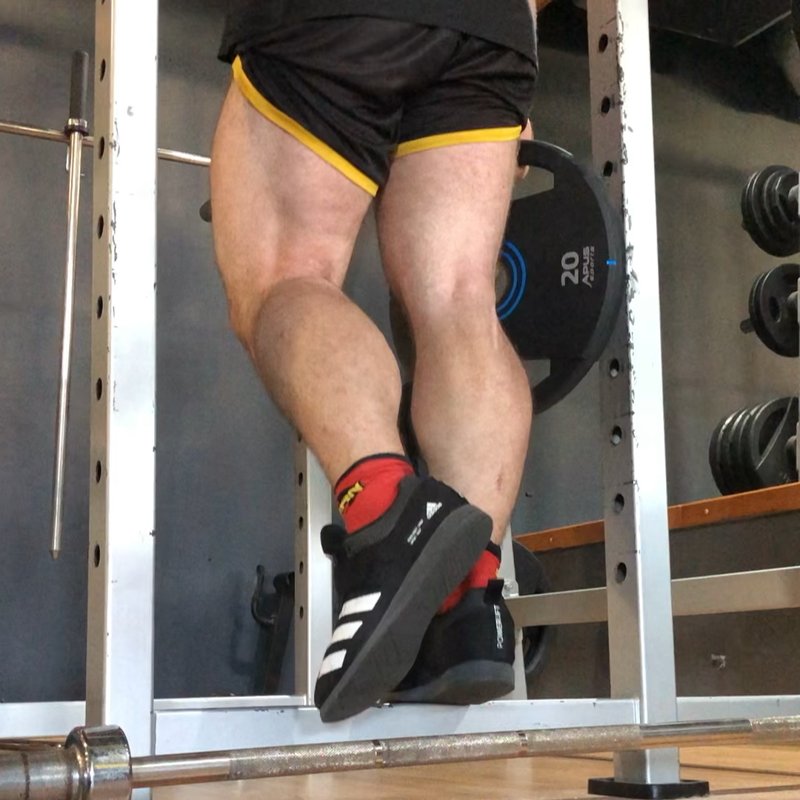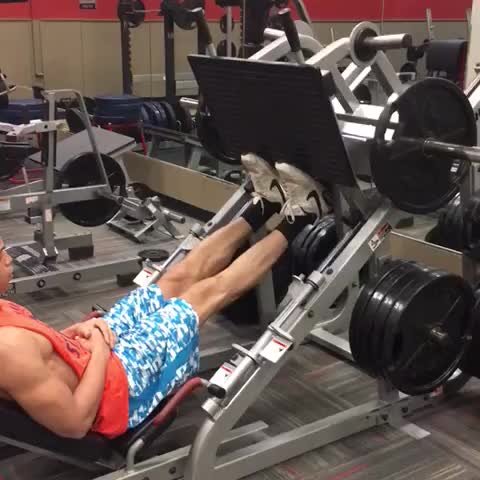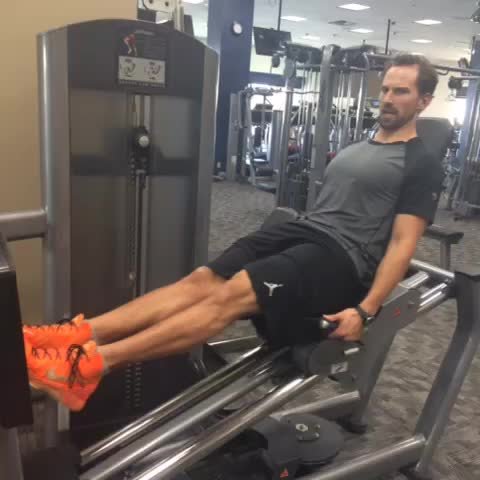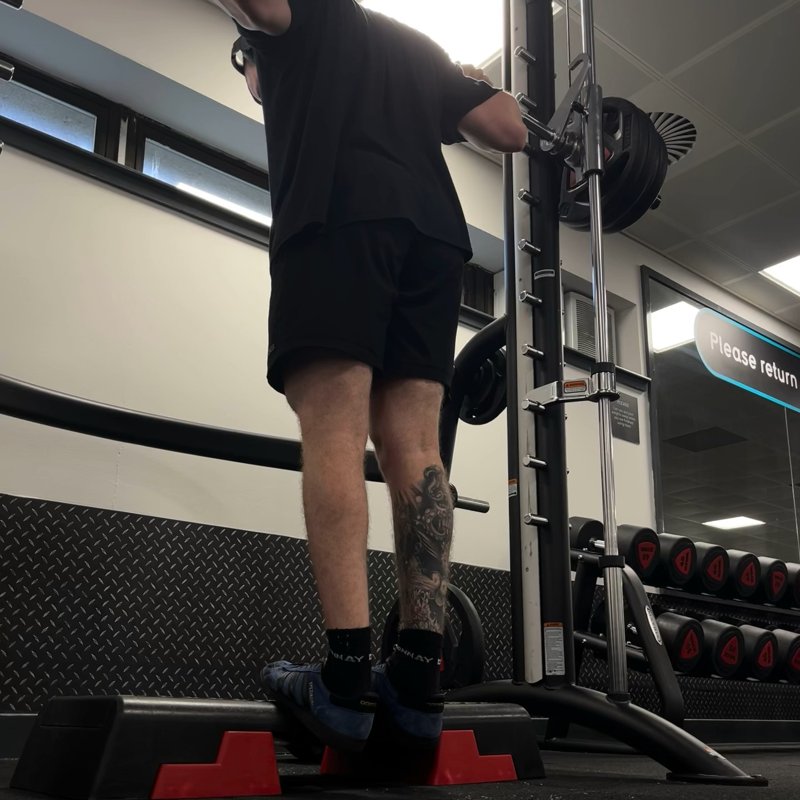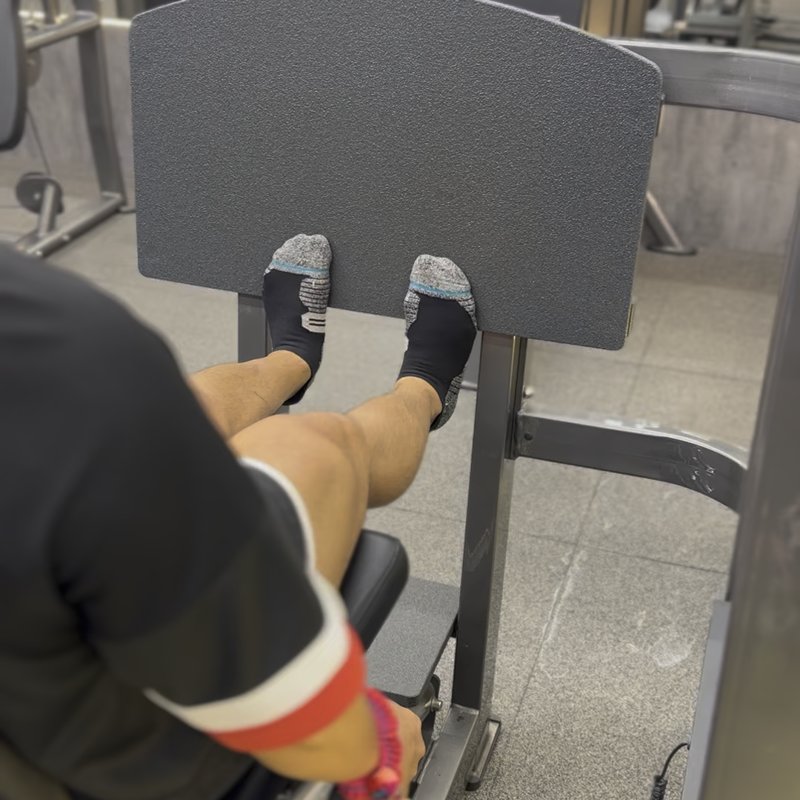Seated Calf Raise: The Ultimate Guide
The Seated Calf Raise is a targeted lower leg exercise that primarily works the soleus muscle (the deeper calf muscle) through plantar flexion of the ankle while the knee is bent, helping to build comprehensive calf strength, size, and endurance.
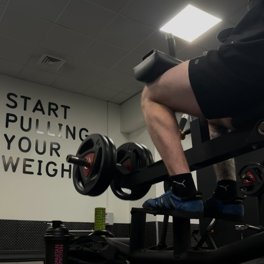
Quick Facts
Key Benefit
Soleus muscle development and lower calf definition
Primary Muscles
Secondary Muscles
Posterior Deltoids
Equipment
machine (optional), dumbbells (optional)
Difficulty
Beginner
Type
Strength
In This Guide
Ready to master the Seated Calf Raise?
Track your progress, see improvements over time, and build strength consistently.
Download GravitusThe Seated Calf Raise is a specialized exercise designed to target the soleus muscle—the deeper, flatter calf muscle that lies beneath the more visible gastrocnemius. Unlike standing calf raise variations that primarily engage the gastrocnemius, the seated position with bent knees places the gastrocnemius in a mechanically disadvantaged position, shifting the majority of the work to the soleus. This distinction is important for complete lower leg development. The soleus contains a higher percentage of slow-twitch muscle fibers compared to the gastrocnemius, meaning it responds best to different training parameters. These slow-twitch fibers contribute significantly to endurance activities and postural support. Beyond aesthetics, strong soleus muscles contribute to improved ankle stability, athletic performance, and everyday function. The soleus plays a crucial role in walking, running, and jumping, and is sometimes called the "second heart" due to its importance in helping pump blood from the lower extremities back to the heart. Whether performed on a specialized machine, with a barbell across the knees, or using makeshift equipment, the seated calf raise is an accessible yet effective exercise that deserves a place in any comprehensive leg training program. For athletes, bodybuilders, or anyone seeking balanced lower leg development, this exercise provides targeted stimulation that standing variations alone cannot offer.
Benefits of Seated Calf Raises
The seated calf raise offers several unique benefits for lower leg development and function.
Soleus Targeting
Specifically isolates the soleus muscle, which is difficult to target with standing calf raise variations due to gastrocnemius dominance.
Ankle Stability
Strengthens the muscles controlling ankle movement, potentially improving balance and reducing risk of ankle injuries.
Endurance Development
Builds endurance in the slow-twitch fiber-dominant soleus muscle, which is crucial for sustained activities like walking, running, and standing.
Reduced Lower Back Stress
The seated position eliminates compression forces on the spine that can occur during weighted standing calf exercises.
Venous Return
Strengthens the "muscle pump" function of the soleus, which helps return blood from the lower extremities to the heart during everyday activities.
Proper Form & Technique
Setup
- Adjust the seated calf raise machine so your knees are bent at approximately 90 degrees when seated.
- Position the knee pad so it rests comfortably just above your knees.
- Place the balls of your feet on the platform or foot plate with heels extending off the edge.
- Sit with your back straight and shoulders relaxed, maintaining good posture.
- If using a machine, grasp the handles or place hands on the knee pad for stability.
- If using a barbell or dumbbells on the knees, position them securely above the knee pad.
- Ensure your feet are hip-width apart with toes pointing forward or slightly outward.
Movement
- Release the safety mechanism if your machine has one, allowing your heels to lower toward the floor.
- Lower your heels as far as comfortably possible to create a stretch in the soleus muscle.
- Pause briefly at the bottom position to maximize the stretch.
- Press through the balls of your feet to raise your heels as high as possible, creating a full contraction in the calf muscles.
- Focus on using only your ankle joint movement - avoid lifting with your knees or hips.
- Hold the fully contracted position briefly (1-2 seconds) to maximize muscle engagement.
- Lower your heels back to the starting position with control, not allowing the weight to drop suddenly.
- Repeat for the desired number of repetitions, maintaining control throughout.
Key Form Tips
Range of Motion
Focus on full range of motion - from a complete stretch at the bottom to a full contraction at the top.
Focus Point
Concentrate on feeling the soleus muscle work rather than just moving the weight, enhancing mind-muscle connection.
Tempo Control
Use a controlled cadence throughout the movement, avoiding bouncing or jerky motions.
Foot Position
Keep your feet firmly on the platform with weight distributed evenly across the ball of each foot.
Knee Position
Maintain your knees at approximately 90 degrees throughout the movement, not allowing them to rise or extend.
Muscles Worked
Primary Muscles
- soleus: The flat muscle located beneath the gastrocnemius that becomes the primary mover for plantar flexion when the knee is bent.
Secondary Muscles
- gastrocnemius: The diamond-shaped muscle forming the visible bulk of the calf, which is partially involved even in the seated position.
- posterior deltoids: A deep muscle that helps stabilize the ankle during the movement.
- flexor digitorum longus: Assists with plantar flexion while also helping to stabilize the toes during the movement.
- flexor hallucis longus: Assists with plantar flexion while particularly helping to stabilize the big toe.
Common Mistakes and How to Fix Them
Insufficient Range of Motion
Not lowering the heels enough or not rising fully onto the balls of the feet limits muscle development. Focus on achieving maximum stretch at the bottom and complete contraction at the top of each repetition, even if it means using less weight.
Using Momentum
Bouncing at the bottom or using body momentum reduces calf engagement and effectiveness. Control the movement throughout, pausing briefly at both the top and bottom positions to eliminate momentum and maximize muscle tension.
Improper Foot Placement
Positioning the feet incorrectly on the platform reduces effectiveness and can cause discomfort. Place the balls of your feet firmly on the platform with heels hanging off the edge, allowing for full range of ankle motion without foot slippage.
Knee Assistance
Using knee extension to help lift the weight reduces soleus engagement. Keep your knees bent at a consistent 90-degree angle throughout the movement, focusing solely on ankle joint movement to perform the exercise.
Inconsistent Tempo
Performing repetitions too quickly or with irregular timing reduces effectiveness. Establish a consistent tempo (e.g., 2 seconds up, 1 second hold, 2 seconds down) to ensure proper muscle tension and eliminate momentum.
Seated Calf Raise Variations
Equipment Variations
-
Machine Seated Calf Raise
Using a dedicated seated calf raise machine that provides consistent resistance through a fixed movement path.
-
Barbell Seated Calf Raise
Using a barbell placed across the lower thighs with padding for comfort, typically performed on a specialized calf bench or platform.
-
Dumbbell Seated Calf Raise
Using one or two dumbbells placed on the lower thighs, suitable when specialized equipment is unavailable.
-

Smith Machine Seated Calf Raise
Using a Smith machine bar across the thighs while seated on a bench with feet on a platform or block.
Technical Variations
-

Single-Leg Seated Calf Raise
Performing the exercise one leg at a time to address muscle imbalances and increase the challenge on each calf.
-
Tempo Seated Calf Raise
Manipulating the speed of different phases (e.g., 3 seconds up, 1 second hold, 3 seconds down) to increase time under tension.
-

Pulse Seated Calf Raise
Using small, pulsing movements at the top of the range of motion to increase time under tension and muscle fatigue.
-

Isometric Seated Calf Raise
Holding the contracted position for an extended period (10-30 seconds) to build endurance and static strength.
Frequently Asked Questions
For most people, training calves 2-3 times per week with seated calf raises provides optimal stimulus for growth while allowing sufficient recovery. The soleus contains predominantly slow-twitch muscle fibers in most individuals, which recover more quickly than fast-twitch fibers and respond well to higher frequency training. If your calves are a prioritized area for development, you might consider training them 3-4 times weekly with varied volume and intensity. For maintenance, even once-weekly dedicated calf training can be effective if you're performing other activities that work the lower legs. Since seated calf raises target the soleus specifically, they can be paired with standing calf raises on separate days for complete development (e.g., seated raises Monday/Thursday, standing raises Tuesday/Friday).
The soleus muscle contains a higher percentage of slow-twitch muscle fibers compared to the gastrocnemius, meaning it typically responds best to higher repetition ranges. For most trainees, sets of 12-20 repetitions work well for general development. For endurance-focused training phases, even higher repetitions (20-30+) can be effective for the slow-twitch-dominant soleus. For strength phases, moderate repetitions (8-12) with heavier weights can still be valuable. Many successful calf development programs incorporate varied rep ranges within a training cycle. Given the soleus's recovery capacity, higher overall volume is often beneficial - consider 12-16 total working sets per week divided across 2-3 training sessions. Regardless of rep range, emphasize complete range of motion and controlled tempo for optimal results.
Neither is inherently "better" - they target different muscles and complement each other well. Seated calf raises primarily target the soleus muscle because this muscle only crosses the ankle joint and is most engaged when the knee is bent. Standing calf raises emphasize the gastrocnemius (the visible, diamond-shaped calf muscle) because this muscle crosses both the ankle and knee joints, functioning optimally when the knee is straight. For complete calf development, incorporating both variations is ideal. If you must choose one, select based on your goals - standing raises for visible upper calf size and powerful movements like jumping, seated raises for lower calf development and endurance activities like walking or running. Many successful programs alternate between the two variations across different training days.
Seated calf raises can be beneficial in rehabilitating certain ankle injuries and preventing future problems by strengthening the soleus muscle, which plays an important role in ankle stability. However, if you're currently dealing with an acute ankle injury, it's important to consult with a healthcare professional before beginning any exercise program. For rehabilitation purposes, typically begin with bodyweight or very light resistance, focusing on controlled movement and gradually increasing load as healing progresses. The seated variation is often preferred in early rehabilitation because it places less stress on the Achilles tendon compared to standing versions. As preventative training, strengthening the soleus through seated calf raises can improve ankle stability, potentially reducing the risk of sprains and other common ankle injuries, particularly for athletes in sports requiring running, jumping, or directional changes.
Video Demonstrations
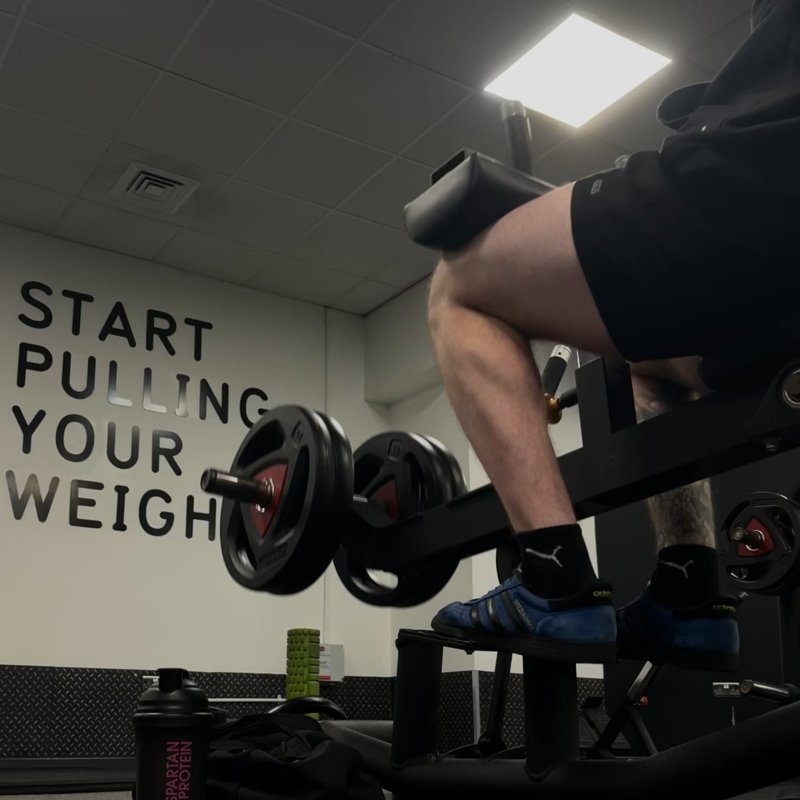
Log in to watch video demonstrations
Login to WatchTips from the Community
-

Keep on balls of feet only. Complete range of motion all the way down and back up.
-

Pause for a solid 4 count at the bottom of every rep. Take sets to failure until you can only do 1/4 reps. The stretch is where the stimulus is. Spend time there and get strong there.
Track your progress with Gravitus
Download Gravitus to log your workouts, track your progress, and join a community of fitness enthusiasts.

Helpful Resources
One Rep Max Calculator
Find your one rep max for any exercise without maximal testing. Essential for developing effective strength training programs.
Calculate 1RMWorkout Programs
Follow structured workout programs created by fitness professionals to maximize your strength and muscle gains.
View Programs